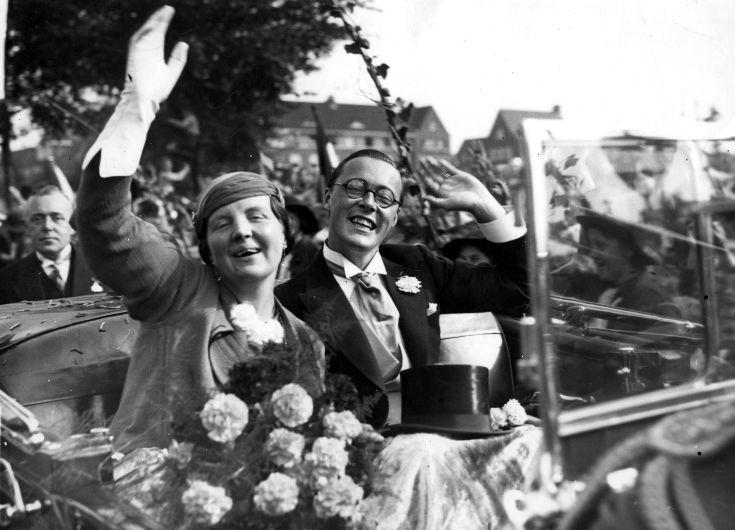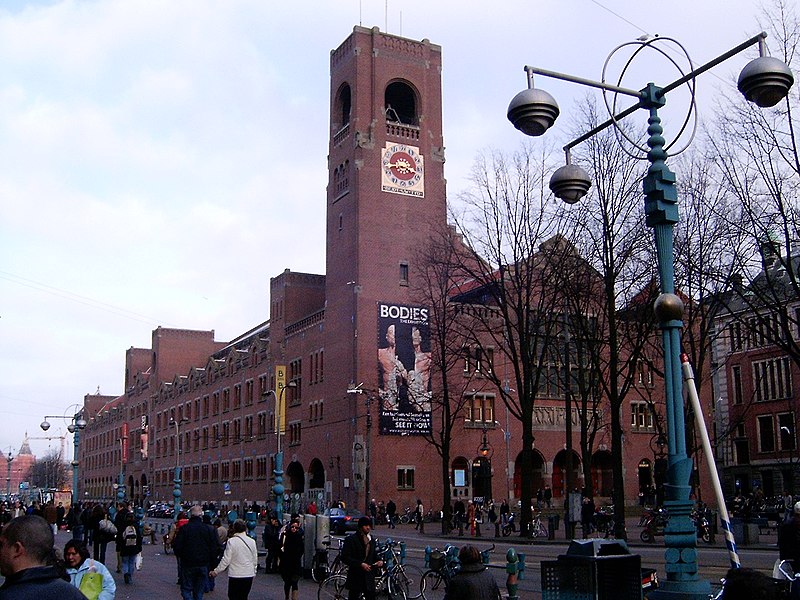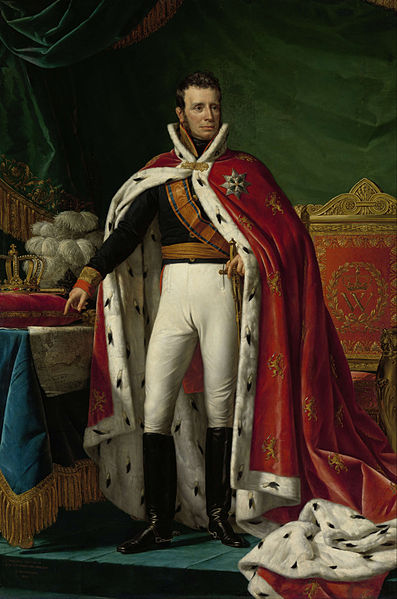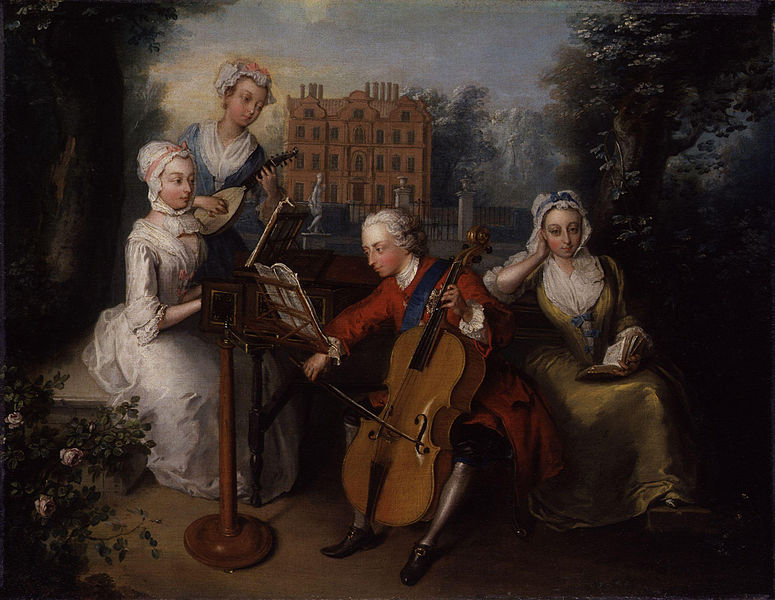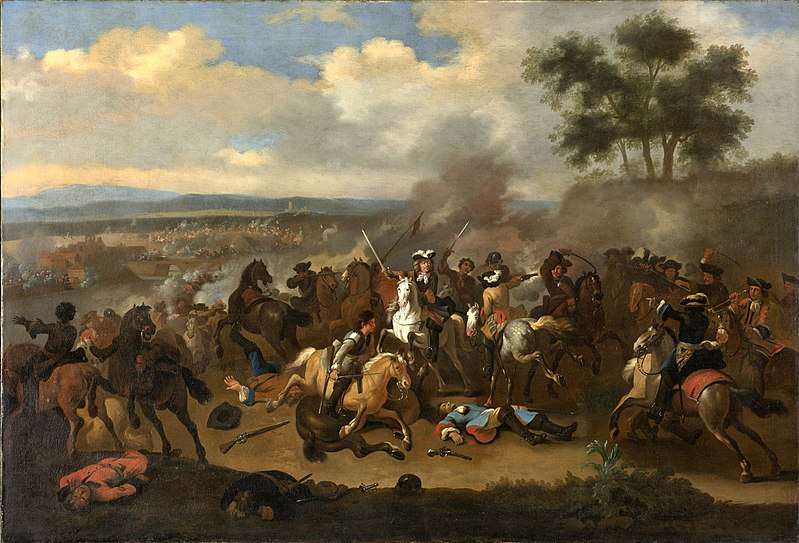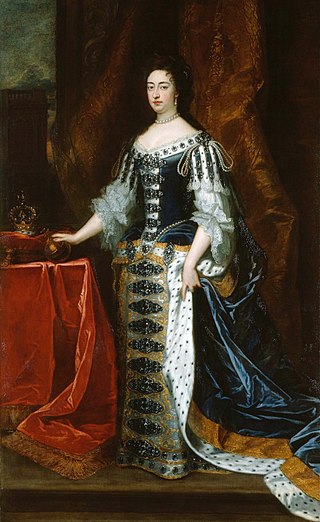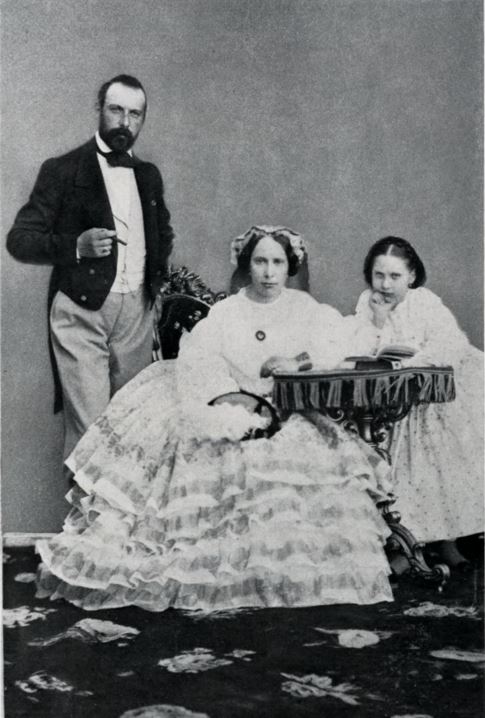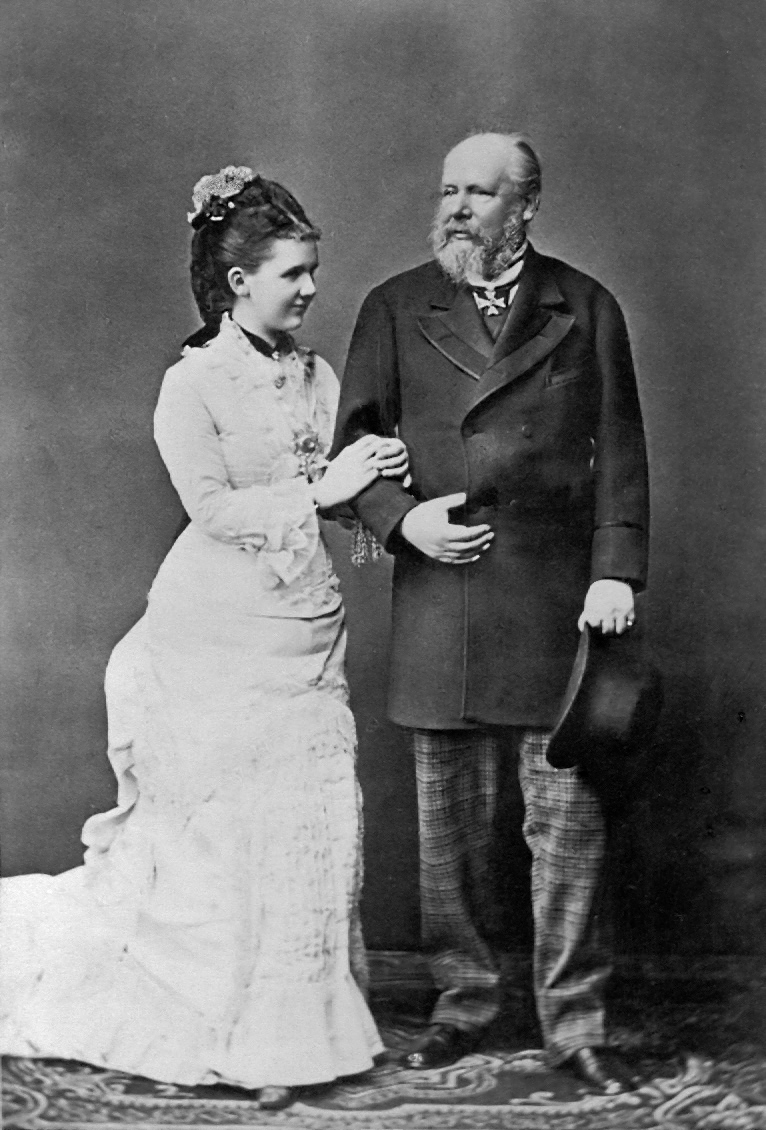by Emily McMahon © Unofficial Royalty 2017

Photo Credit: Royal Order of Sartorial Splendor
Princess Beatrix of the Netherlands, the future Queen Beatrix, and Claus von Amsberg were married on March 10, 1966, in a civil ceremony at the City Hall in Amsterdam in the Netherlands and a religious ceremony at the Westerkerk also in Amsterdam.
Beatrix’s Family

Beatrix, on the right, with her family in 1948; Photo: Corbis
Beatrix Wilhelmina Armgard was born at Soestdijk Palace in Baarn, Netherlands, on January 31, 1938. She was the first of four daughters of Princess Juliana, the heir to the throne of the Netherlands, and Prince Bernhard of Lippe-Biesterfeld. Her second and third names are in honor of both of her grandmothers. When asked about the significance of his daughter’s first name, Prince Bernhard stated that he and his wife had simply liked it.
At the time of her birth, Beatrix’s grandmother Wilhelmina had been Queen of the Netherlands for nearly 50 years. Beatrix’s birth was welcomed by the Dutch people as the House of Orange was on the brink of extinction comprising of only Juliana and Wilhelmina. Beatrix’s younger sisters Irene, Margriet, and Christina followed in 1939, 1943, and 1947, respectively.
Beatrix spent her early life at Soestdijk with her family. World War II broke out in 1939; the German occupation of the Netherlands followed shortly after. Wilhelmina, Juliana, Bernhard, Beatrix, and infant Irene escaped to London for safety following the invasion. As London was frequently bombed at the time and in danger of possible German occupation, Juliana’s position as heir to the throne and the vulnerability of the children necessitated their move to a safer location.
Juliana, Beatrix, and Irene were moved to Ottawa, Ontario, Canada, in 1940. The family lived in Stornoway House, a home owned by a prominent Ottawa family which later became a property of the Canadian government. Margriet was born in Ottawa during the family’s exile. Beatrix and Irene attended Rockcliffe Park Public School and lived as peacefully as possible in difficult circumstances. Beatrix, her mother, and her sisters returned to the Netherlands in 1945. A gift of several thousand tulip bulbs was sent from Juliana to Canada in appreciation for the country’s wartime hospitality, a tradition that has continued to this day.
Beatrix continued her education in Bilthoven (a village near Baarn) as the first Dutch royal to attend school with other children. Free from the tight security and formality of other European courts, Beatrix rode her bicycle to school from Soestdijk. Remembered by her classmates as jovial and approachable with a touch of mischief, young Beatrix was once given a lash across her hands at school after being caught placing a firecracker underneath the desk of the school janitor. After her grandmother’s abdication and her mother’s accession in 1948, Beatrix became the heiress presumptive to the Dutch throne.
Beatrix then studied law and sociology at Leiden University, graduating in 1961. She had a romance of some seriousness during that time with a fellow Dutch student but allegedly broke off the union at Juliana’s insistence. Beatrix also became an avid sailor and greatly enjoyed piloting The Green Dragon, a yacht given to her by the Dutch people on her eighteenth birthday. Beatrix also became a great fan of the arts, dabbling in sculpting, and frequently attended theatrical productions and ballet in Amsterdam.
Throughout her childhood and young adulthood, Beatrix accompanied her mother (and later went on her own) touring the country she would one day rule. After her university graduation, Beatrix spent two years touring the Middle East, the United States, and various Dutch territories around the world.
Claus’ Family

Claus in 1936; Photo Credit – Wikipedia
Claus Georg Wilhelm Otto Friedrich Gerd von Amsberg was born to Claus Felix von Amsberg and Baroness Gösta von dem Bussche-Haddenhausen at Haus Dotzingen (his uncle’s estate), near Hitzacker, Germany on September 6, 1926. The only son in the family, Claus had an older sister, Sigrid, and five younger sisters – Rixa, Margit, Barbara, Theda, and Christina. He spent part of his childhood in Tanganyika (now Rwanda), where his father operated a coffee plantation. At the age of 12, Claus returned to Germany and proceeded with his education at Baltenschule in Pomerania. He continued his studies until he was drafted into the German Army in 1942.
After joining the army, Claus served with the 90th Panzer Division, fighting in Italy during World War II. Claus was captured by Allied forces in May 1945. At the time of his capture, Allied forces determined Claus had no Nazi sympathies despite his being a member of Hitler youth groups. During his time in a prisoner of war camps in Italy and Britain, Claus served as a driver and an interpreter.
Following his release from Allied captivity, Claus began his studies of political science and law at the University of Hamburg. In 1953, while Claus was a student, his father passed away. Following his graduation in 1956, Claus practiced law briefly in Hamburg before entering the West German foreign service. He held positions in the Dominican Republic and Côte d’Ivoire before returning to Bonn.
During his time in the foreign service, Claus became an expert on the economic development of third-world countries. Through his education and foreign service career, Claus became fluent in German, English, Spanish, Portuguese, French, Swahili, and later Dutch. At the time he met Beatrix, Claus was working with the Ministry of Foreign Affairs on fostering relationships with several African countries.
The Engagement
Beatrix and Claus initially met at the wedding of Tatiana of Sayn-Wittgenstein-Berleburg and Moritz, Landgrave of Hesse in the summer of 1964. Tatiana’s brother Richard – also a friend of Claus – had long been mentioned as a possible suitor for Beatrix.
Claus and Beatrix met again in January 1965 at a ski resort in Gstaad, Switzerland, as guests of Prince Moritz of Hesse. In an amusing twist, Richard of Sayn-Wittgenstein-Berleburg accompanied Claus on his trip, fueling the fire that Beatrix and Richard were romantically involved. However, an astute (and baffled) reporter following the story noticed that Richard was often seen skiing alone. Richard is believed to have accompanied Claus as a “decoy” to allow the couple to get to know one another away from intrusions. Within a week of this second meeting, Prince Bernhard began making private inquiries about Claus’ history and character.
The release of a photograph of Claus and Beatrix together at Juliana’s birthday in April 1965 piqued public interest in the couple. However, when asked about his relationship with the princess, Claus confirmed that he was acquainted with Beatrix, but stated that the idea of marriage was “inconceivable” and that he had no plans to marry anyone at that point.
A second photo of the couple walking hand in hand at Drakensteyn was released in May, appearing in British, then Dutch newspapers. Although Beatrix and Claus had hoped to keep their romance a secret for a bit longer, they released that speculation about the nature of their relationship would only increase following the release of the photos.
Queen Juliana announced the engagement to the Dutch public via television on June 28, 1965, from the palace at Soestdijk. Beatrix said of the romance, “With us duty goes before sentimental considerations.” Juliana noted that the family understood that acceptance of the engagement may be difficult for Dutch citizens due to the war. Claus and Beatrix made additional radio and television appearances later in the day answering questions about the engagement and its political implications.
The announcement of the engagement was a surprise to most of the Dutch citizens who were unaware the two were so serious about one another. The couple noted several times that they had expected the engagement would draw criticism but was confident that their decision was a good one. When told of the engagement, Dutch Premier M. L. T. Cals reportedly uttered, “A German…what a pity.” However, after meeting with Claus, Cals had a good opinion of him. Cals then spoke in support of the couple and expressed hope that their happiness with one another would win over the Dutch public.
Beatrix and Claus met with members of the Dutch Cabinet and Parliament the day after the engagement was announced. Premier Cals confirmed that a bill would be introduced for parliamentary approval or disapproval of the marriage. This was required by the Dutch constitution in order for Beatrix to retain her place in the line of succession.
Public Reaction
With memories of the horrible experiences of the World War II occupation still fresh in the minds of many Dutch citizens, there was a significant public protest over Beatrix’s choice of a husband. As Claus was a former soldier and nominal member of the Hitler Youth (a requirement at the time for attendance at Claus’ school), the association with the Nazi party was particularly painful. Orange swastikas were painted on walls around Amsterdam as an ugly association between the House of Orange and Germany’s Nazi past.
Still, other Dutch citizens believed that Claus was simply an unimpressive candidate as a consort for their future queen. In addition to his WWII service, Dutch were concerned that Claus was too old for Beatrix, had little personal fortune, and was not of royal blood. The more republican dissenters began to raise the question of whether the monarchy was really beneficial to the country at all. At least three separate protests were made to the Dutch government by members of academia, former Resistance leaders, and the clergy urging for rejection of the marriage bill.
In October 1965, several Dutch newspapers ran advertisements urging readers to sign the petition against the approval of the marriage. The petition was signed by several prominent Dutch academics and members of the artistic community. A handful of Dutch Parliament members indicated their plan to vote against the bill.
Over 65,000 signatures were on the petition when it was submitted to the Dutch Parliament requesting the denial of a bill approving the marriage between Beatrix and Claus due to his military service and association with the Nazi party. Approval of the bill was required by the Dutch Constitution for Beatrix to remain in the line of succession.
The Family’s Response
Claus understood the Dutch objections to his membership in Nazi youth organizations as well as his service with the German Army during World War II. He explained that while he did not take an active stance against the Nazi Party, he also did not maintain active involvement in any organization with the group. In hindsight, Claus remarked, the Nazi rule had been incredibly harmful to the world. Similar regimes, he continued, should be avoided at all costs.
Claus also noted that he looked favorably on Prince Bernhard’s life as a consort to a queen regnant, indicating that he wished to assist Beatrix and the Dutch in much the same way as his prospective father-in-law had done for Queen Juliana. Claus’s military record was carefully examined by Dutch officials in order to identify any objectionable actions on his part. However, the investigation did not discover Claus’ participation in any activities deemed unacceptable for his future role as Beatrix’s consort.
Beatrix noted that if her parents or the Dutch government had demanded she give up Claus, she would have done so. For her part, Juliana said that she gave her full support to Beatrix and her fiancé and that she was glad the couple followed their hearts despite any expected backlash from the public. Juliana also remarked that she had no intentions of abdicating the throne to Beatrix anytime soon.
Prince Bernhard, a German who had also initially been distrusted by the Dutch public, praised his future son-in-law, noting that in time the Dutch citizens would understand that Claus was an excellent person who would be an asset to his new country. Prince Bernhard further noted that he “could not think of a better husband for [his] daughter.”
In addition to his extensive knowledge of various languages, Claus began learning Dutch while dating Beatrix. He also began touring the Netherlands and meeting with the people, alone or accompanied by his fiancée. At the time of the wedding, he was reported to speak the language “…fairly well, and with a good accent.” Claus’ positive interactions with the Dutch people eventually made him a very popular member of the royal family.
Wedding Preparations
The bill for Beatrix’s permission to marry Claus passed the lower house of the Dutch Parliament in November 1965, with 132 yeas and 9 nays. The house also approved the extension of Dutch citizenship for Claus on the day of the wedding. The bill passed the upper house the following month.
The wedding date was set for March 10, 1966, at the Westerkerk, a large church located not far from the building that hid Dutch Jewish teenager Anne Frank during World War II. The choice of Westerkerk was unique in that it had never before hosted a royal wedding. Nieuwe Kerk, a church near the palace and a more obvious choice, was undergoing significant renovations at the time that would not be completed before the wedding.
Beatrix herself reportedly oversaw many of the details of the wedding and related celebrations. Plans were made to televise the religious ceremony in the Netherlands, a first for Dutch royal weddings. Beatrix requested that a red light indicator be placed in Westerkerk as a sign of when the television cameras would be on her.
On February 17, 1966, Claus and Beatrix registered their upcoming marriage in Baarn. The couple received a gift of silver salt cellars made in Amsterdam upon registering their marriage. The gift was presented to Beatrix and Claus by Burgermaster F.J. van Beeck Calkoen on behalf of the city of The Hague. Schoolchildren in Amsterdam were released early for the day in celebration of the event. Most of the children flocked to the town hall to wave at the couple and the accompanying television cameras.
After the registration, Beatrix and Claus toured The Hague via horse-drawn carriage. Later that day, a gala celebrating the engagement was held in The Hague. The couple attended the gala with their families and about 700 dignitaries.
The wedding banns were published on the same weekend in The Hague’s Hall of Knights. In celebration of the event, small bags of candy attached to parachutes were released from the ceiling as part of a Dutch tradition. Claus himself took part in the fun diving for the falling candy. The couple then attended a special performance of A Midsummer Night’s Dream.
The Dutch government agreed to contribute 1.5 million guilders ($420,000 American) for wedding expenses. The city of Amsterdam provided approximately $220,000 American, while the rest of the cost was covered by Beatrix’s family and private donations.
The Dutch government did not release postage stamps commemorating the event (common for royal weddings), claiming that sufficient time had not been allowed to create the stamps. However, the Netherlands Antilles did release a single stamp in celebration of the event. The stamp featured a pair of lovebirds standing on a pair of wedding rings encircling the letters B and C.
Celebrations in Amsterdam
The 300 official guests of the royal family were treated to an Amsterdam canal cruise on the afternoon of March 9. Guests also enjoyed trips to Rijksmuseum and tours of the Netherlands diamond cutting and polishing factories. Beatrix and Claus attended a concert held by children from each of the eleven provinces of the Netherlands during this time.
A ball in honor of the couple was held at the Royal Palace that evening. The event was attended by over 400 guests and included an uninvited reporter who snuck in intending to get clandestine shots of the couple. It was Beatrix herself who noticed the journalist, who was immediately escorted out of the party.
The Wedding Ceremonies
On March 10, 1966, as required by Dutch law, Beatrix and Claus were married at a civil ceremony prior to the religious service. The couple traveled first to the Amsterdam Town Hall in the 1898 golden coach used for the coronation of Beatrix’s grandmother, Queen Wilhelmina. The Westerkerk bells rang and cannons fired as the two made their way to the hall.
Orange, blue, and red flowers representing the Dutch flag decorated the interior of the Amsterdam Town Hall. The brief ceremony, conducted by Mayor Dr. Gijsbert Van Hall, concluded with Beatrix, Claus, and their witnesses signing the marriage certificate in front of a group of personal guests.
The coach carrying Beatrix and Claus continued from the town hall to the religious wedding at the renovated Westerkerk. The procession was about a mile in length, shorter than most other royal weddings. This was due in part to the caution over possible unrest and concern for the safety of the couple, their guests, and spectators.
Queen Juliana, Prince Bernhard, and Mrs. von Amsberg traveled to the wedding in a glass coach, while eleven cars carried various royal guests. An estimated 80,000 to 100,000 spectators lined the streets to watch the processional. The crowd was unusually light for a royal wedding. People were kept home possibly due to the controversy surrounding Claus, the cool and rainy weather, and the television broadcast.

The religious ceremony; Photo Credit – By Unknown photographer ANEFO – GaHetNa (Nationaal Archief NL), CC BY-SA 3.0, https://commons.wikimedia.org/w/index.php?curid=38971959
Claus and Beatrix entered the church to the French hymn of “A toi la glorie,” set to music by Handel. The signed marriage certificate from the civil wedding was presented to the clergy at the start of the religious service. The ceremony was conducted by Reverend Johannes Hendrik Sillevis Smitt, who urged the couple not to take the outcry over their wedding to heart. Reverend Hendrik Jan Kater conducted the closing prayer, calling for God to look after everyone, and for greater understanding between the Dutch Christian and Jewish populations.
Beatrix and Claus whispered and smiled at one another several times during the 75-minute religious service. The word “obey” was not used during the civil or the religious ceremony, possibly due to Beatrix’s prominent status or to the changing views on a woman’s role within marriage. When Beatrix had difficulty putting on Claus’ ring, he pushed it on the rest of the way himself and the two shared a chuckle.
There was also some interest in the wedding within Canada as Beatrix had lived in the country as a young child. Canada was also rumored to be a possible honeymoon destination for the couple. Rallies were held in some of the larger Canadian cities to celebrate the event.
After the religious wedding, the couple entered the 1898 coronation coach and headed back to the royal palace, waving to spectators along the way.
Wedding Day Protests

A smoke bomb is thrown on Dam Square a few days before Beatrix’s wedding; Photo Credit – https://fromhotelvwithlove.com
Given the mixed public opinions and the threat of violence on the wedding day, several additional security and safety precautions were established. Physicians in Amsterdam were requested to stand by in case of protests escalated into violence. In addition, the blood types of all of the wedding guests were recorded in the assurance that supplies would be stocked accordingly.
An estimated seven smoke bombs were thrown by a group of 1,000 young protesters at the wedding. One of the bombs went off just before the golden coach passed, causing a horse to jerk. However, the horse recovered its gait quickly. The smoke was not said to be hazardous and dissipated almost immediately. Another bomb was set off just as the couple left the church.
An estimated 8,000 soldiers and police officers were brought in to control crowds and prevent wedding-related violence. These included plainclothes officers who mingled in the crowd looking for any signs of unrest. Prior to the wedding, the Dutch police requested the use of the Anne Frank House as a temporary police post due to its close proximity to Westerkerk. The Anne Frank House refused.
Police had to remove a small barricade of bicycles across the road included in the route, a symbolic move made by the protesters at the German seizure of Dutch bicycles during World War II. There were also reports of protesters unsuccessfully attempting to rush at the royal procession. Nineteen arrests were also made in connection with the protests. No deaths or serious injuries were reported, but one of the protesters received non-life-threatening injuries in a skirmish with the police.
Wedding Attire
Beatrix had made a name for herself in the years before her wedding as one who generally ignored trendy French fashion houses. She made no exception to this in planning the design and assembly of her wedding dress, choosing largely unknown Dutch designer Caroline Berge-Farwick of Maison Linette. Berge-Farwick was known to be a favorite of Queen Juliana’s and was known for designing single pieces of clothing specific to her individual clients rather than offering seasonal collections.
Beatrix wore a square-necked gown of white silk and satin duchesse with a 16-foot train falling from the waist. The dress featured three-quarter length sleeves, a fitted waist, and a bell-shaped skirt with white velvet trim. Hints of the scrollwork from the Württemberg Ornate Pearl Tiara were incorporated into the embroidery on the dress, which Beatrix herself assisted in the design. All of the cloth used was made especially for the dress in St. Etienne, France.
Beatrix’s mid-length white tulle veil was attached to the Württemberg Ornate Pearl Tiara, brought to the Dutch royal collection via Sophie of Württemberg (first wife of Willem III of the Netherlands). The tiara may have come with Sophie in its complete form, or as loose gems that were later used in its assembly. The tiara remains one of the grandest of the Dutch collection and features numerous large pearls set among diamond-studded spikes. It was also worn by Beatrix’s grandmother Wilhelmina at her enthronement.
On her left side, Beatrix wore a pearl and diamond brooch that was also created for Sophie. She also carried a bouquet of white eucharis and lilies of the valley, both common flowers used for spring weddings. The floral creations for the wedding were designed by Dutch designer Abel Verheijen, who later became famous for his art all over Europe. The wedding marked the first of many occasions in which Mr. Verheijen would provide his floral designs for Dutch royal events, including Beatrix’s 1980 inauguration.
The six bridesmaids wore long satin dresses with straight skirts and matching lace jackets with half-length sleeves. The dresses were light blue, mint green, or lavender, with two bridesmaids wearing each color. Each bridesmaid also donned feathered headpieces and elbow-length white gloves during the service. The two flower girls wore short-sleeved white satin dresses with circlets of white flowers in their hair. The pages wore black trousers, ruffled white shirts, and wrist-length white gloves.
Claus, wisely forgoing his military uniform, wore a morning coat with striped trousers, a gray vest, and gray trousers.
The Wedding Attendants
For her six bridesmaids, Beatrix chose a mix of relatives, fellow royals, and close friends. Four bridesmaids carried and arranged Beatrix’s train, while the two remaining bridesmaids took charge of the pages and flower girls. The six bridesmaids were:
- Christina of the Netherlands, Beatrix’s youngest sister.
- Christina of Sweden, a granddaughter of Gustav VI Adolf of Sweden.
- Christina von Amsberg, Claus’ sister.
- Lady Elizabeth Anson, a stepdaughter of Prince George Valdemar of Denmark and a cousin of Queen Elizabeth II.
- Joanna Roell, a friend of Beatrix and daughter of a former lady-in-waiting to Queen Juliana.
- Eugenie Loudon, a Dutch noble and friend of Beatrix.
The page boys were Joachim Jencquel and Markus von Oeynhausen-Sierstorpff. The flower girls were Daphne Stewart Clark and Carolijn Alting von Geusau.
The couple also had several prominent witnesses to the signing of the marriage certificate at the civil ceremony. These witnesses were:
- Prince Ernst Aschwin of Lippe-Biesterfeld, the bride’s uncle.
- Willem Drees, a former Dutch premier and leader of the Dutch Resistance movement during WWII.
- Princess Alexandra of Kent
- Count Ferdinand von Bismarck
- Julius von dem Bassche Haddenhausen
Wedding Guests
Approximately 1600 guests attended the religious ceremony at Westerkerk, with a small portion being present at the civil service as well. About 20 of the 45-member Amsterdam City Council did not attend the wedding out of protest for Beatrix marrying a German. In addition, two Amsterdam rabbis invited to the wedding refused to attend due to the treatment of Dutch Jews by Nazi occupiers.
In a somewhat unusual circumstance, few crowned heads of Europe attended the wedding celebrations. Of those who did, the majority were younger monarchs. Additionally, several of the missing monarchs were represented by their children or other younger members of their families.
The presence of Carlos Hugo of Bourbon-Parma was initially doubted due to the controversy over his marriage with Beatrix’s sister Irene several years before. Additionally, it was rumored that Juan Carlos and Sophia of Spain would not attend either. The word had been that Juan Carlos was angry over the Dutch response to the Bourbon-Parma/Netherlands wedding, although other reports indicated that Juan Carlos had fallen ill with the flu just before the start of the celebrations. In any event, all of the Spanish royals in question did attend with no further reports of trouble.
The following royal and family guests attended the religious wedding:
- Queen Juliana and Prince Bernhard of the Netherlands
- Mrs. Gosta von Amsberg
- Princess Marina, Dowager Duchess of Kent and Prince Michael of Kent (representing Elizabeth II)
- Crown Prince Harald of Norway
- Grand Duke Jean and Grand Duchess Josephine-Charlotte of Luxembourg
- Prince Charles of Luxembourg
- King Baudouin and Queen Fabiola of the Belgians
- King Constantine II and Queen Anne-Marie of the Hellenes
- Princes Carlos Hugo and Princess Irene of Bourbon-Parma
- Princess Christina of the Netherlands
- Princess Benedikte of Denmark
- Princess Christina of Sweden
- Infante Juan Carlos and Infanta Sofia of Spain
- Princess Alexandra of Kent and Sir Angus Ogilvy
- Prince Albert and Princess Paola of Liege
- Infanta Pilar of Spain
- Christina von Amsberg
- Prince Karim Aga Khan
- Princess Armgard of Lippe-Biesterfeld
- Princess Margaretha of Sweden and Mr. John Ambler
- Princess Margriet of the Netherlands and fiancé Pieter van Vollenhoven
- Prince Aschwin and Princess Simone of Lippe-Biesterfeld
- Princess Irene of Greece
- Prince Richard of Sayn- Wittgenstein-Berleburg
- Mr. and Mrs. W. F. Bull, the Canadian ambassador to the Netherlands and his wife
Pamela’s Story
(The photo of Pamela Sue Smith and Gerda Mus as the wedding appears courtesy of Koninklijke Bibliotheek/The Memory of the Netherlands. The original photograph can be found here.)
Pamela Sue Smith, a 12-year-old girl from Patchogue, New York, chose Queen Juliana when assigned to prepare a school report on a famous person. Pamela wrote to Juliana as a requirement for the project and received a standard reply from a Dutch lady-in-waiting. Pamela then sent additional letters, which also received replies.
An overexcited Pamela then started a rumor at her school that she would be attending the upcoming Dutch royal wedding. The rumor gained strength among her classmates and their families, and within a day Pamela had received congratulations from all over town. The local chamber of commerce even proposed sending with Pamela a bottle of locally-made perfume to give to Beatrix as a gift.
When the mayor of Patchogue contacted Washington to inquire about a passport for the “wedding guest,” a horrified Pamela confessed that she had not actually been invited to the wedding. By this time, Onno Leebaert, director of the Netherlands Tourist Association, caught wind of the story and decided to make it a reality for Pamela. Mr. Leebaert was able to provide a complimentary airline ticket and secure an official invitation to the wedding for a very excited girl. He praised Pamela for her honesty in coming clean about the original rumor.
On March 8, Pamela left for Amsterdam in the company of Gerda Mus, an employee of the tourist association. Upon her return, Pamela lamented her height, noting that while she was able to see the processional quite well, it was difficult to watch the actual ceremony with so many adults in front of her. Pamela said that she liked the windmills and canals in Amsterdam, and even learned a few Dutch words on her trip. She was especially surprised to see her own picture in the office window of a Dutch news association. Pamela returned home to Patchogue, tired and happy, with several souvenirs, including a Dutch lace cap.
After the Wedding
The completion of the wedding ceremonies made Claus a Prince of the Netherlands, excluding any rights of succession to the throne. A personal allowance of $80,000 was also awarded to him. Castle Drakensteyn was undergoing remodeling at the time to accommodate the new couple.
After arriving at the palace, Beatrix and Claus stepped out onto the balcony to wave to a crowd of about 200,000 spectators. The balcony was decorated with bunches of white tulips in celebration of the occasion.
Following the wedding, Beatrix released a statement thanking those who had sent gifts and well-wishes. She also acknowledged those who were opposed to the union with the following words: “That not all can rejoice in this marriage is a fact we recognize and understand. [We know] that many of you had to bear fathomless sorrow in the past and suffered irreparable losses. It is this background that deepens our feeling of gratitude.”
In a happy epilogue to the story of Richard of Sayn-Wittgenstein-Berleburg acting as a decoy during Beatrix’s and Claus’ courtship, Richard met Princess Benedikte of Denmark for the first time at the wedding. After spending time dancing and chatting during the wedding festivities, the couple began dating. Their engagement was announced in 1967, and the couple married the following year.
Honeymoon
Early projected honeymoon destinations were Tanzania (the area where Claus spent part of his childhood), Canada, or the Dutch West Indies. Prior to the wedding, an anonymous royal source claimed that while the couple was not planning to vacation in the United States, they would be heading “westward” from the Netherlands.
The couple honeymooned in Mexico, dividing their time between Acapulco and the island of Cozumel. While in Cozumel, Beatrix and Claus stayed in a villa owned by former Mexican President Adolfo Lopez Mateos. While visiting Acapulco, the couple stayed at the estate of Jorge Mendes, a Mexican financier. Both Lopez Mateos and Mendes were friends of the Dutch royal family.
In a statement later released by the US State Department, Beatrix and Claus were first flown first to the United States via a KC-135 military jet. The jet was said to be returning to the US from Germany when it made a stop in Frankfurt, West Germany, allowing the couple to board. The statement also noted that Beatrix and Claus were only able to fly on the military jet as space was already available. The request for transport had been initially made by Queen Juliana through diplomatic channels. After landing at Andrews Air Force Base in Maryland, the couple then boarded a second military plane to Laredo, Texas, and onto Mexico.
Due to guidelines at the time, passengers were required to pay $1 more per person for a flight in a military plane if commercial flights were available. After Dutch airlines KLM totaled the cost of service for two passengers on the Frankfurt/District of Columbia/Laredo route, it was discovered that the couple had been overcharged by $7.88 for the service. There were no reports of the family demanding reimbursement.
Children

Beatrix and Claus with their three sons; source: Hello
Beatrix and Claus had three sons:
- King Willem-Alexander (born 1967) married Máxima Zorreguieta Cerruti, had three daughters including Catharina-Amalia Princess of Orange, heir apparent to the Dutch throne, Dutch Royal Family descends from this marriage
- Prince Friso (1968 – 2013) married Mabel Wisse Smit, had two daughters
- Prince Constantijn (born 1969) married Laurentien Brinkhorst, had two daughters and a son
This article is the intellectual property of Unofficial Royalty and is NOT TO BE COPIED, EDITED, OR POSTED IN ANY FORM ON ANOTHER WEBSITE under any circumstances. It is permissible to use a link that directs to Unofficial Royalty.





